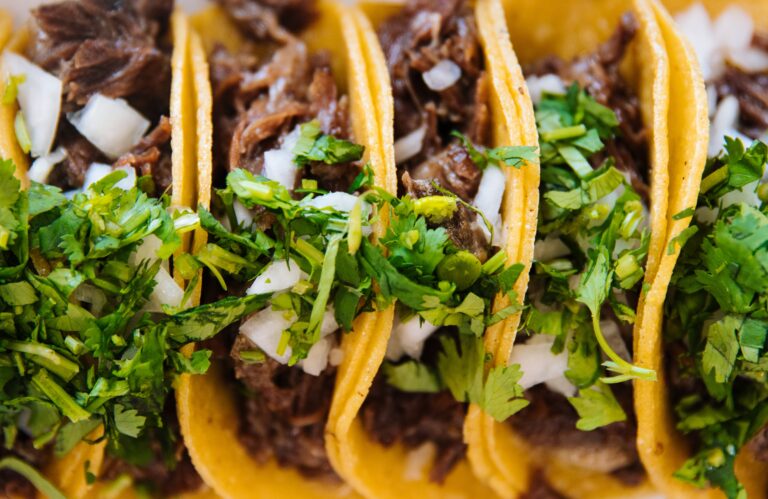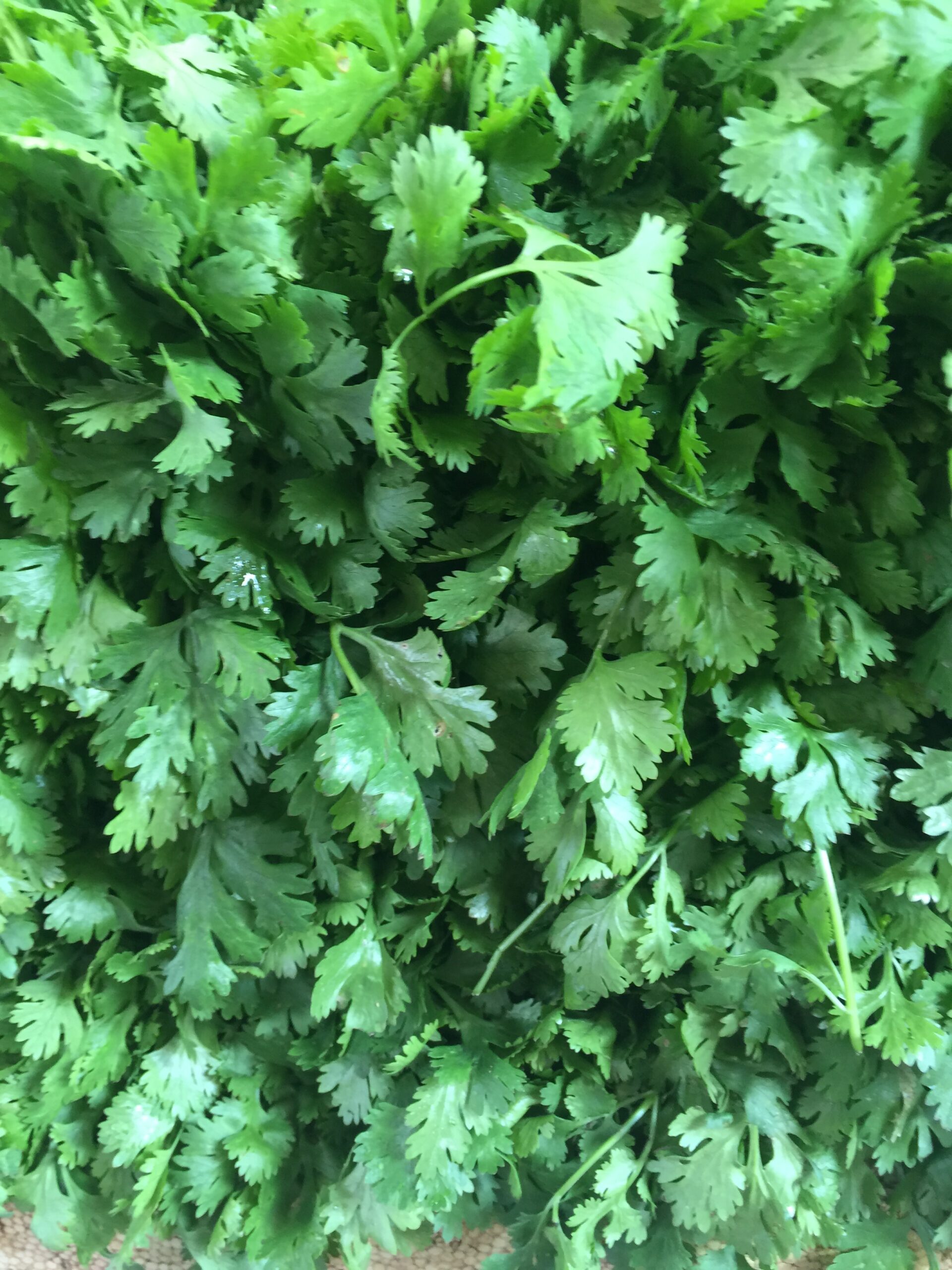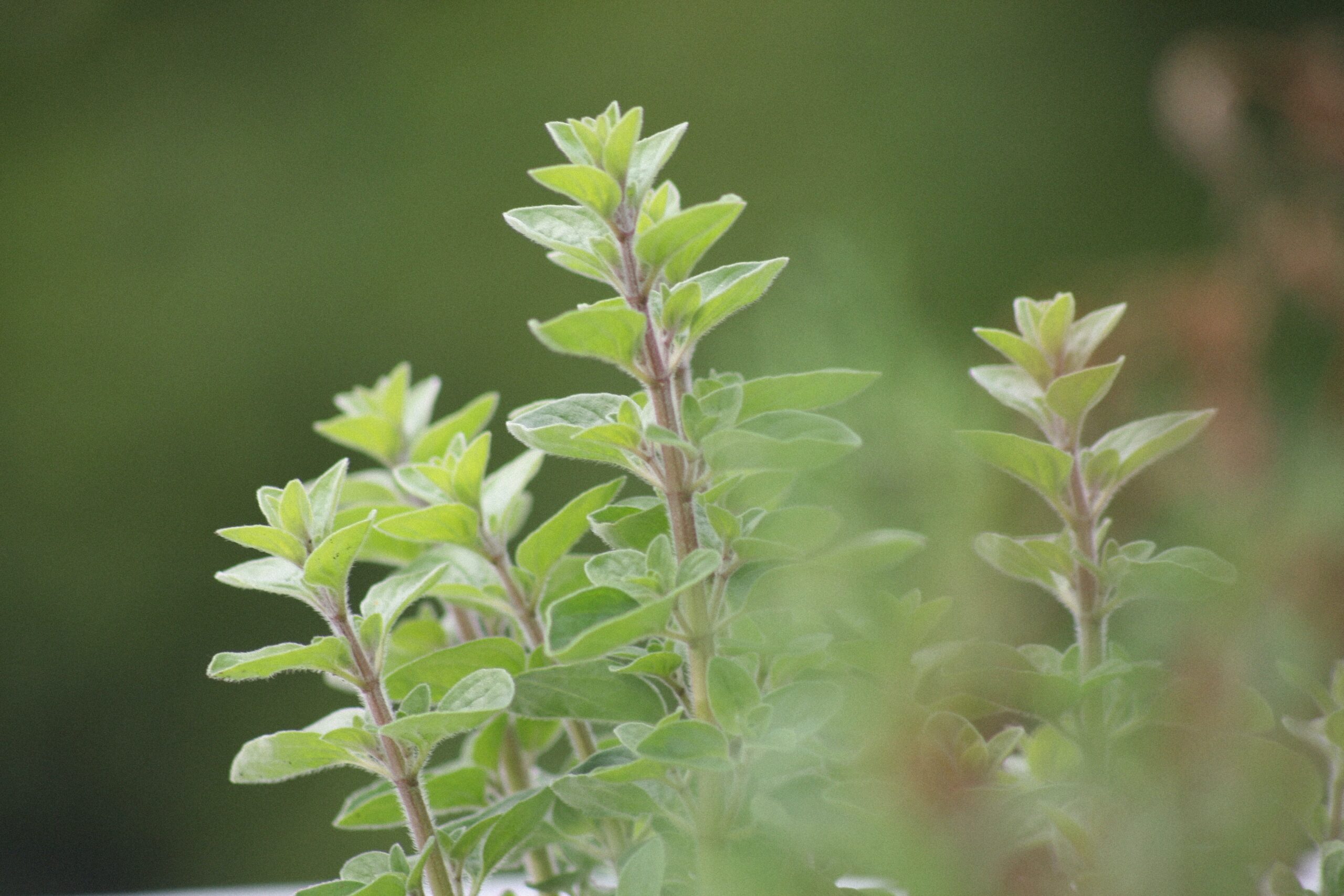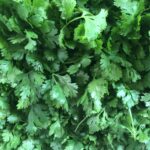
The herb we know as cilantro (Coriandrum sativum) are the leaves of the coriander. These aromatic, green feathery leaves that we love to add to our soups, tacos, rice, and potatoes, are more than flavor. Cilantro possesses a vast nutritional content besides varied and extensive medicinal properties that make of cilantro one of the jewels of the home garden.
Native from Asia, the Mediterranean and North Africa, it is used widely around the world. As per UC Davis, cilantro is grown commercially in almost every country of the world, with Mexico being its largest exporter and the United States its largest importer, where California stands as its largest domestic producer.
Rich in Vitamins A. B1, B2, B3, B6, C, E, K, calcium, iron, magnesium, manganese, phosphorus, potassium, sodium, and zinc, a serving size of one ounce (28g) contains: 0 fat, 6 calories, 0g cholesterol, 1g sodium, 1g protein, 0g sugar, 1g dietary fiber, 0g fat and 13mg sodium. It is the perfect addition to your daily food intake!
All parts of the cilantro plant are fit for consumption and depending on the individual, cilantro is said to taste pungent, bright, lemony, soapy, or peppery; what is for sure is that its flavor is not for everyone, it is something you either love or hate, there are no in-betweens.
Cilantro and its seeds have a plethora of very important properties, among which we find:
- It detoxifies our bodies by eliminating lead, arsenic, aluminum, cadmium, and mercury from our systems, which could be in part responsible for heart disease, infertility, oxidative stress (the imbalance between free radicals and antioxidants in our bodies), hormonal imbalances, neurological conditions (for example: migraines, Alzheimer’s, autism spectrum disorders, Huntington’s disease, multiple sclerosis, Parkinson’s disease).
- It is a natural anti-inflammatory
- It is a good antibacterial
- It is a good diuretic
- Reduces sugar levels in blood
- Reduces cholesterol and triglycerides levels
- Reduces gas, bloating, and cramps related to menstrual periods
- Reduces toothache and cures mouth infections
- Reduces stomach, digestive system discomfort
- Reduces anemia
- Strengthens liver function
- Effective against bacteria that causes food poisoning and dysentery
- Effective against urinary tract infections and prevents kidney stones
- Effective fighting against cancer cells
- Helps prevent urinary tract infections
- Helps alleviate constipation
- Alleviates allergic symptoms
- Alleviates effects of hives, sunburns, poison ivy
- Promotes heart health
- Promotes skin health
- Improves sleep quality with no side effects
- Has calming properties
- It might aid reduce migraine pain
- Supports the immune system
- Detoxifies the body of elements that cause allergic reactions
- Its seeds (coriander) have analgesic effects
- Cilantro essential oil has been found to have antifungal properties
NOTES:
- Cilantro is considered a safe herb to use. Although there have been allergic and overdose reactions reported, those are not many. Allergy symptoms include diarrhea, vomiting, itchiness and difficulty to breath
- Because there is not sufficient information as to the effects of cilantro in pregnant or lactating mother’s it is recommended to eat less than moderated amounts. Some sources indicate it should be avoided all together to prevent possible fetal damage
- If considering getting pregnant, some sources advise not to consume cilantro as it could hinder pregnancy or cause an abortion
- Avoid giving it to infants
- It is recommended to reduce its consumption before a surgery as it is suspected of slowing blood clotting
- Cilantro is suspected of interaction with photosensitizing and anticoagulant drugs
STORAGE: Wash carefully under running water, allow it to dry over the counter over a kitchen towel for about 30 minutes, wrap up in paper towels and put in a hermetically sealed container or a zip lock bag making sure all air is out. Store in the refrigerator. Should last fresh and nice for a week.
NOTES:
- Cilantro leaves shouldn’t be cooked because when heated, cilantro loses its strength and benefits. Therefore, the ancient tradition of chopping it finely and topping your dishes with it is the best practice
- Carefully wash all herbs under running water before use or storage to prevent bacteria such as Salmonella, E. Coli, Shigella and Listeria
HOW TO USE IT:
- Add finely chopped leaves and stems to your tossed salads
- Use leaves and stems to garnish your chicken, beef, lentils, bean soups and dishes
- Add leaves and stems it to your salsa, guacamole, and raw, hot pepper (chili) sauces
- Try a cilantro pesto
- Cilantro garlic mayonnaise: 1 clove of garlic, minced; 1 tablespoon minced cilantro; 5 tablespoons of mayonnaise; lime juice to taste. Add it to enhance sandwiches, French fries, etc.
- Add it to your Spanish sofrito (mirepoix)
- It can be used to substitute culantro (Eryngium foetidum)
- Add it to chutney
- Add cilantro and jalapeño pepper to your hummus
- Revive your old rice: Rub olive or corn oil on an oven safe dish, put the rice in it and ad a bit of oil to it, put parmesan cheese on top and put it in the oven for 15 or 20 minutes. When finished, sprinkle with chives or onions and cilantro finely chopped before serving. You may substitute the oil with real butter.
- Beet salad: Cook three medium sized beets until they are soft, peel, allow them to cool. When cooled, chop them in about ½ inch squares, add finely sliced red onions cut in half, springle with salt and black pepper, add olive oil and lime juice to taste. Add finely chopped cilantro before serving. If desired, you could add shelled and deveined cooked shrimp.
- Cilantro and cucumber juice: Under running water, wash a bunch of cilantro without the root, chop it on a cutting board and put it in a blender container. Take a large cucumber and with a knife take the two tips, one at a time, rubbing each tip against the cucumber to make the foam that makes it bitter get out of it, then wash, peel and with a fork, rake the cucumber lightly from one tip to the other; leave on the counter for 5 minutes, then wash carefully, chop it and add to the cilantro. Add about one litter of water and blend until the mixture looks uniform and there are no big pieces, add the juice of one lime and blend briefly to mix in. You might want to drink it as is or sieve it using cheese cloth to leave only the liquid part of it. Put it in a clear, air-tight glass container, it should keep well for three days. Drink ¼ of a cup three times a day to remove metals from your system, to cleanse and strengthen your liver, during an allergy episode or if suffering hot flashes, suffering from insomnia, lower sugar levels in your blood, lower cholesterol and triglycerides, to strengthen your immune system. Don’t drink more than a month at a time. DO NOT DRINK, IF YOU ARE PLANNING TO GET PREGNANT, ARE PREGNANT OR LACTATING.
Photography by: Avinash Kumar and Brigitte Tohm @ Unsplash







Recent Comments